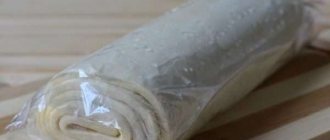Dry ice is a substance that constantly changes into a gaseous state, it ignores the liquid form. It is carbon dioxide (carbon dioxide) in a solid state, formed by pressing at a pressure of ~300 Atmospheres.
The substance does not pose a danger to humans in any of its states of aggregation. There are dozens of conditions and recommendations on how to store dry ice correctly.
What is dry ice and where is it used?
Dry ice
in the solid state - carbon dioxide, which, when cooled to minus 70 degrees, turns into a solid phase.
It is used
to cool products and transport them, which helps maintain their quality.
Interesting materials:
What is the normal rate of eyelash loss per day? What kind of coolant is poured into Solaris? Which planet appears in the east in the morning? Which planet is visible in the east in the evening? What is the population density in Japan? What kind of mail is there? What kind of underlay for vinyl laminate flooring? What is the weather like during the Anticyclone in winter? What kind of weather occurs during a cyclone? What are the benefits of jogging?
Areas of application and purpose
The substance is used for various purposes, both practical and recreational. Due to the fact that dry ice has an extremely low temperature, releasing a large amount of cold, it is used for “shock” freezing of food.
Wherever it is necessary to maintain extremely low temperatures for short-term storage, dry ice works better than its water counterpart.
Active application is found in the following areas:
- Cooking – many cocktails that require carbonation are indispensable without dry ice. Cooling for further transportation of meat and fish preparations, minced meat, other perishable products, as well as drinks and alcohol.
- Home and everyday life - rodent control, cleaning molded plastics and rubber, branding cattle, preserving plants.
- Medicine – storage and transportation of medications, creation of a cold environment for transplantation of internal organs and donor blood.
- The chemical industry is an active reagent when working with alkaline elements.
- Laboratories, pharmaceutical industry - an effective refrigerant for various substances.
Dry ice is best known for its use in various celebrations, weddings and parties. Simply mixed with water, event hosts can create unforgettable smokescreen shows.
Interesting! The natural transition of solid carbon dioxide into a gaseous state creates a mysterious atmosphere.
Let's create magic
Stage 1 - extract acetate
Baking soda, officially called sodium bicarbonate and sodium bicarbonate, cannot be replaced.
Calculating optimal proportions is a delicate matter; precise electronic scales will come in handy here.
The approximate ratio is:
- For 200 ml of 9 percent vinegar, measure 25.25 g of soda;
- the same amount of 30% essence corresponds to 87.4 g of sodium bicarbonate;
- if the concentration is 70%, there are about 210 g of powder per 200 ml.
Step 2 - Turn acetate into hot ice
- So, you have a saturated solution at your disposal. You can warm it up on the stove or in the microwave, there is no difference, the only important thing is to evaporate the excess water.
- The action must be carefully controlled: as soon as a crust begins to form, heating should be stopped.
- Leave the composition alone for five minutes; Noticing that the crust is expanding and the solution is being covered with ice, pour in a few drops of boiling water.
- Stir, add a little more liquid, repeat until lumps and ice are completely eliminated.
- The resulting thick mass should be placed in a glass jar and put in the refrigerator - let it cool to room temperature.
In the case when ice is made not from soda and vinegar, but from industrial powdered sodium acetate, proceed as follows:
- Pour the crystals into plain water, at the rate of 5 level teaspoons per 3 teaspoons of liquid, and microwave for 10 seconds.
- Add the same amount of time, check the reaction - heat until the solution becomes crystal clear.
- Any grains that have lingered on the walls of the dish must be carefully removed, or simply pour the solution into a clean container.
- Then everything is as usual - put it in the refrigerator and wait until the temperature drops to at least room temperature.
- To start crystallization, just throw in a granule of dry acetate.
As you can see, you can make the famous dry ice without any special chemical skills.
Something went wrong
- If crystals are noticed in the cooled acetate solution or it has completely frozen, repeat the experiment with the same composition, starting with warming up. Make sure that now the crystals do not linger on the walls of the dish.
- The solution can be used repeatedly, but since its saturation will increase each time due to the evaporation of water, there is a possibility of premature crystallization. To correct the awkward situation, pour in half a teaspoon of water and do everything again, starting with heating.
- It also happens that crystallization does not occur at all or occurs very weakly. The root of the problem is the insufficient volume of acetate: add an incomplete additional spoon of powder, and everything will work as it should.
What determines the shelf life
The residence time of dry ice in a solid state of aggregation is influenced by the following factors:
- Temperature . Evaporation occurs already at -78°C. The higher the temperature, the faster the product sublimates. Long-term storage is possible only in industrial conditions using special freezing units.
- Form . The product is available in the form of large blocks, granules and small particles. Large blocks last the longest (1 kg disappears in about 2-3 hours at room temperature). The smaller the fragment, the faster the sublimation.
- Tara . It is possible to keep carbon dioxide solid for a relatively long time only in special containers. Any household appliances or refrigeration devices are not suitable for long-term storage at home.
- Storage . Should be cool and well ventilated. You cannot keep a lot of ice in a closed room with people; it is unsafe for health.
Storage rules
Dry ice is a completely man-made substance that does not occur naturally in nature. Therefore, to preserve it in this state, you need to use special industrial units . In order for it to sublimate more slowly and not cause harm to health, the following requirements must be observed:
- For regular storage of dry ice, for example, for the purpose of conducting certain types of business activities, you need to buy special containers . Household appliances do not allow maintaining the solid state of carbon dioxide for a long time. Such containers are sold by specialized enterprises. Containers are made of stainless steel, plastic and special heat-insulating materials to slow down the sublimation process.
- If the task of storing dry ice is one-time in nature, you can use a portable refrigerator . But, you need to use a durable, functional container. An ordinary cooler bag will not work; it is better to purchase an industrial container.
- You can make a refrigerator box yourself . A cardboard box or plastic container should be lined with foam plastic inside and out. Metallized adhesive tape is used to cover the seams. The container must have a tight-fitting lid. It is important that there are no large gaps between the foam sheets; they can be filled with polyurethane foam.
- A container filled with ice should not be left in a warm place . It should be in a cool place, away from sources of heat and sunlight.
- The room in which the product is located must be well ventilated . Due to sublimation, the concentration of carbon dioxide will constantly increase, which can lead to a deterioration in the well-being of nearby people.
- Dry ice should not be kept in a household freezer . Its temperature is not enough to significantly slow down the evaporation process. In addition, it is unsafe due to the risk of explosion if the pressure in the chamber increases excessively. The pressure increases many times due to the accumulation of carbon dioxide.
- A regular refrigerator should not be used for storage . This is unsafe, fraught with explosion and food spoilage. In addition, excessively low temperatures may cause the refrigerator to malfunction.
Carbon dioxide extremely quickly restores its original gaseous state. Even if you use an industrial isothermal container, the daily volume reduction will be about 10% . Without industrial equipment it is impossible to stop the sublimation process.
There are also special insulated containers for household use. Daily losses of solid matter when using such devices average 25% of the volume . Even at specialized enterprises, solid carbon dioxide is stored for no longer than a few weeks, since it is easier to produce ice as needed.
How to freeze ice if there are no molds
The situation when you need to get cubes urgently, but there are no containers at home, happens often. Therefore, life hacks about what to use instead of plastic containers are in demand more than ever.
It turns out that you can use various improvised objects. Including disposable tableware.
Plastic cups
Small plastic containers designed for alcoholic beverages are best. They have a small volume of about 50 ml and are an ideal solution for freezing ice.
Plastic is resistant to deformation and temperature changes, easily tolerates the properties of freezing water, adapting to its shape. In addition, the volume is great for making cocktails. If necessary, frozen water can be crushed or split into several parts.
Silicone molds for candies
This option is a great opportunity to add some originality to your cocktail party. Figured ice will become the “highlight” of the drinks. For beauty, mint leaves or raspberries, cherries, and strawberries are added to it.
Frozen water cubes are easily removed from the soft silicone mold without much difficulty. There are different sizes, buy several - for a large group and enough for 1-2 people.
Chocolate box inserts
In a similar way, plastic inserts are used in which sweet treats are placed. They, like disposable cups, can easily withstand low temperatures. The ice cubes are small, often of an original shape.
In this case, it is also recommended to add berries, decorative leaves or even dyes. It all depends on your imagination and the preferences of your guests.
Plastic bags
This option is more often used for preparing desserts with crushed ice or drinks to which a large amount of finely chopped ice is added. The water is frozen volumetrically, and after reaching the desired shape, it is split or crushed with a blender.
The bags do not deform, prevent leakage and cope with temperature changes. The ice is not very elegant and neat, but it more than pays for itself in terms of volume.
Plastic toys
Resourceful citizens came up with the idea of using children's toys. For example, Legos or small containers are great for freezing ice for cocktails and spirits.
Use shaped molds. However, do not forget about hygiene. Before using the toy for cooking, rinse it thoroughly and disinfect it.
Metal lids
Deep lids from bottles and jars are used for freezing. The metal is resistant to deformation and negative temperatures, and holds water well. With enough lids you will get smooth and beautiful ice cubes for cocktails with or without alcohol.
Finding a way out of the situation when there are no molds for freezing ice in the house is simple. Show your imagination and you will have at least five options for freezing water for making desserts and drinks.
Source
How to purchase
You can buy this cooler online, in a chemical store, and sometimes in a supermarket at a very affordable price. Its sales volumes range from 1 to 25 kg, and its shelf life (small quantities in polystyrene packaging) is up to 3 days.
Another type of carbon dioxide is dry snow. It's made of flakes rather than granules, but essentially has the same cooling effect. It is often used in carbon dioxide fire extinguishers, so some homegrown inventors use them for other purposes - to cool drinks in the summer heat.
It is worth noting that careless handling of this chemical can result in serious injury. Exposure to temperatures of -75°C – – 80°C on the skin causes burns and frostbite to tissues.
Precautionary measures
How to properly store ice to avoid problems:
- Handle only when wearing protective gloves.
- Do not work with the substance in unventilated areas.
- Avoid contact of vapors and particles with eyes and mucous membranes, use safety glasses.
- Before tactile contact, remove metal items from your hands and remove jewelry.
- Choose the right place and containers for storage - high, ventilated rooms, preferably non-residential ones.
- Do not inhale fumes as carbon dioxide displaces oxygen and may cause suffocation.
Thus, dry ice is a safe substance if a number of conditions are met.
Rate this post











